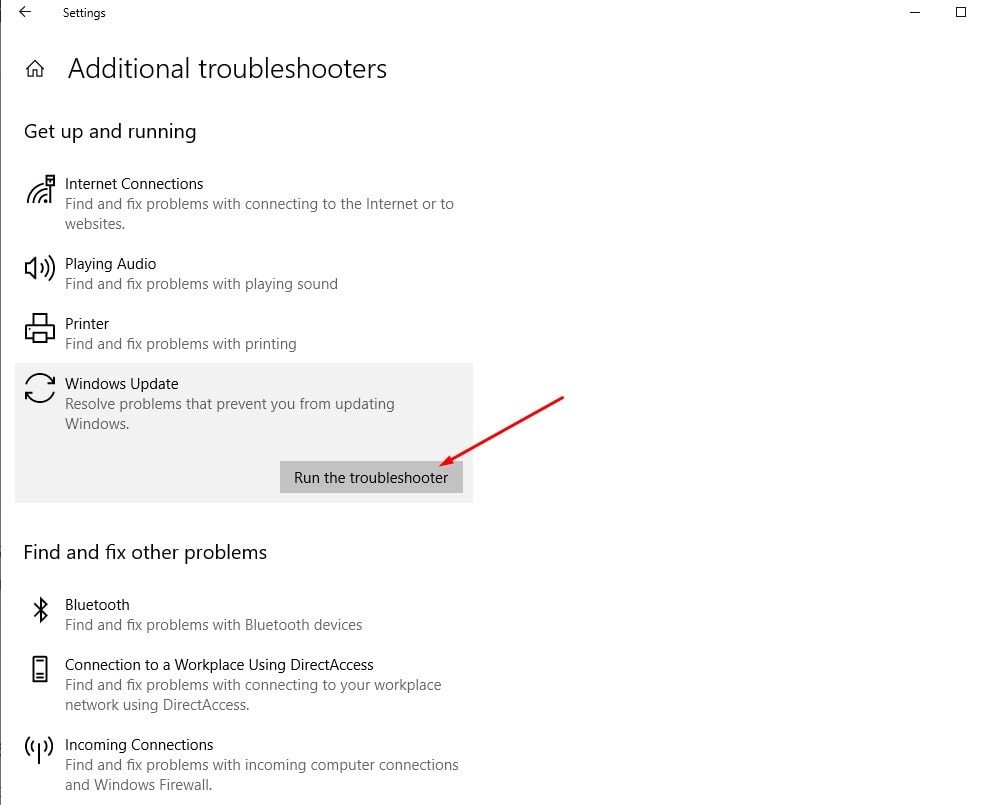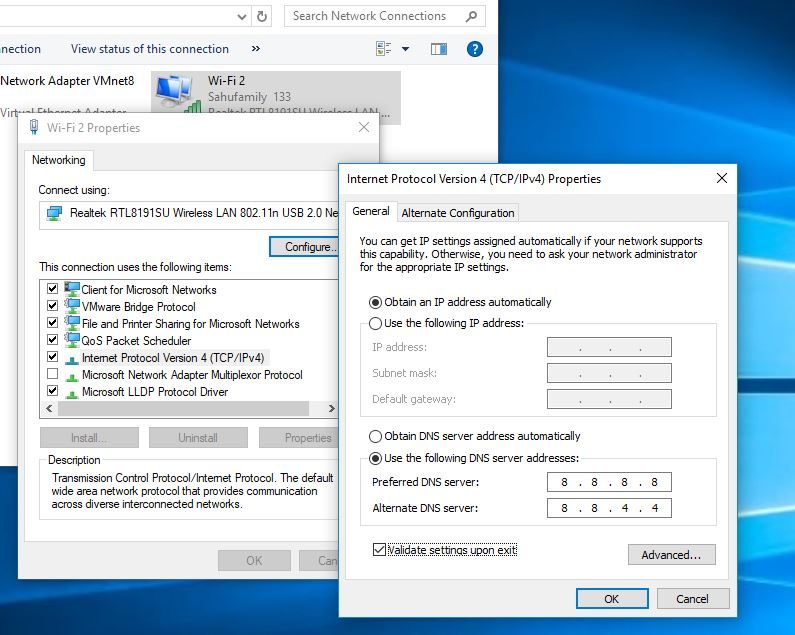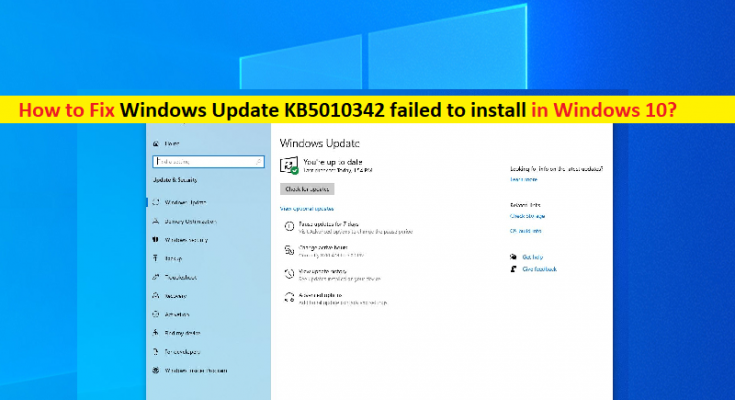What is ‘Cumulative update stuck downloading/ Windows Update KB5010342 failed to install’ in Windows 10?
In this post, we are going to discuss on How to fix Windows Update KB5010342 failed to install, Windows 10 cumulative update stuck downloading. You will be guided with easy steps/methods to resolve the issue. Let’s starts the discussion.
‘Update KB5010342 failed to install/Cumulative update stuck downloading’: It is common Windows Problem considered as Windows Update issue. This issue is usually occurred when you try to download and install Windows update in your computer. You may experience Windows Update KB5010342 failed to install issue when you attempt to install Windows Update KB5010342 in your computer. The Windows 10 cumulative update download & install error is appeared with some error codes like 0x800F0922 or 0x80073701.
Microsoft releases Windows update regularly in order to fix several known issues with Microsoft Windows Operating System and add several enhancements to your Windows computer. However, several users reported they faced Windows Update KB5010342 failed to install, Windows 10 cumulative update stuck downloading issue on their Windows 10 computer. Some users reported they faced Windows Update stuck at some point like 23% or other and unable to proceed the upgrade process.
The possible reason behind the issue can be the corrupted databases or files on machine that lead to the upgrade process being stuck. This issue can also be occurred if Windows Update services are not running properly, issue with DNS settings, corruption in system files or registry, and other Windows issues. It is possible to fix the issue with our instructions. Let’s go for the solution.
How to fix Windows Update KB5010342 failed to install/ Windows 10 cumulative update stuck downloading?
Method 1: Fix Update KB5010342 failed to install/Cumulative update stuck downloading issue with ‘PC Repair Tool’
‘PC Repair Tool’ is easy & quick way to find and fix BSOD errors, DLL errors, EXE errors, problems with programs/applications, malware or viruses issues, system files or registry issues, and other system issues with just few clicks.
Method 2: Check Windows Update Services are running properly
Step 1: Open ‘Services’ app in Windows PC via Windows Search Box
Step 2: Now, find and double-click on the following services one-by-one to open its ‘Properties’. Click ‘Start’ button under ‘Service Status’ section and then hit ‘Apply > Ok’ to save the changes, if the service is not running.
Background Intelligent Transfer Service
Windows Update
Workstation
Step 3: Once done, restart your computer and check if the issue is resolved.
Method 3: Rename Software Distribution folders
Step 1: Open ‘Services’ app in Windows PC using above method
Step 2: Find and right-click on ‘Windows Update’ service, and select Stop‘ to stop the service
Step 3: Go to ‘C: Drive > Windows > SoftwareDistribution’ folder
Step 4: Right-click on ‘SoftwareDistribution’ folder and select ‘Rename’ and rename it to ‘SoftwareDistribution.old’
Step 5: Now, repeat ‘step 1 and step 2’ again but this time right-click on Windows Update Service and select ‘Start/restart’ option to start the service and then restart your computer, and check if the issue is resolved.
Method 4: Run Windows Update troubleshooter

Windows built-in Windows Update troubleshooter can resolve the issue. Let’s try.
Step 1: Open ‘Settings’ app in Windows PC and go to ‘Update & Security > Troubleshoot > Additional Troubleshooters’
Step 2: Find and select ‘Windows Update’ troubleshooter, and click ‘Run the troubleshooter’ and follow on-screen instructions to finish troubleshooting and once finished, restart your computer and check if the issue is resolved.
Method 5: Change DNS settings

You can fix the issue by changing DNS server address in computer.
Step 1: Open ‘Network and Connections’ settings page in Windows PC via Windows Search Box and go to ‘Change Adapter Settings’
Step 2: Right-click on your network adapter and select ‘Properties’. Find and double-click ‘Internet Protocol Version 4 (TCP/IPv4)’ to open its properties.
Step 3: Select ‘Use the following DNS server addresses’ radio button, type ‘8.8.8.8’ and ‘8.8.4.4’ in preferred and alternate DNS server address and then hit ‘Ok > Apply > Ok’ button to save the changes. Once done, restart your computer and check if the issue is resolved.
Method 6: Run SFC scan
You can run SFC scan in computer to repair corruption in system files in order to fix the issue.
Step 1: Type ‘cmd’ in Windows Search Box and press ‘SHIFT + ENTER’ keys on keyboard to open ‘Command Prompt as Administrator’
Step 2: Type ‘sfc /scannow’ command and hit ‘Enter’ key to execute. Once executed, restart your computer and check if the issue is resolved.
Method 7: Perform Clean Boot
If the issue is still persist, you can perform Clean Boot operation in computer in order to fix.
Step 1: Open ‘System Configuration’ app in Windows PC via Windows Search Box
Step 2: Click ‘Services’ tab, tick ‘Hide all Microsoft Services’ checkbox and hit ‘Disable all’ button
Step 3: Click ‘Startup’ tab, click ‘Open Task Manager’ and disable all unnecessary services running there in Task Manager and then close Task Manager
Step 4: Finally, in System Configuration app, click ‘Apply > Ok’ button to save the changes and once done, check if the issue is resolved.
Conclusion
I am sure this post helped you on How to fix Windows Update KB5010342 failed to install, Windows 10 cumulative update stuck downloading with several easy steps/methods. You can read & follow our instructions to do so. That’s all. For any suggestions or queries, please write on comment box below.



